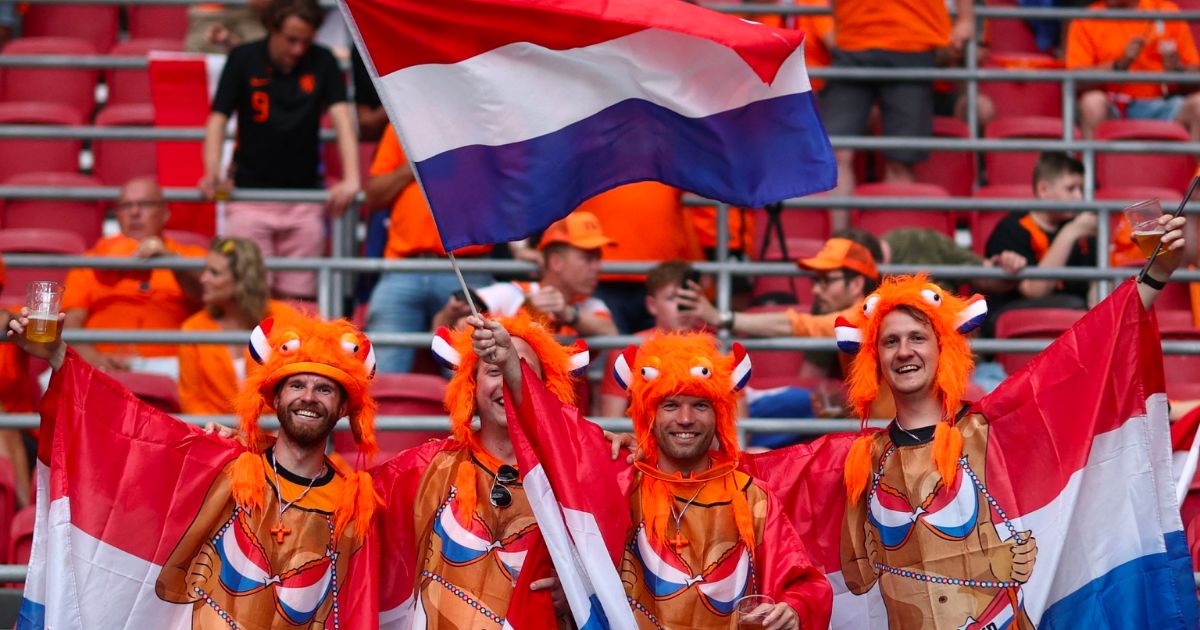Have you ever wondered why the Dutch wear orange to any national occasion when the Holland color is not even in the Netherlands’ flag? Perhaps you’ve been stampeded by the throngs of Holland orange football fans that swarm the streets during important games or drowned in the orange explosion that blankets every Dutch city on King’s Day.
It’s a sight to behold, but why do the Dutch adore orange so much? Shouldn’t they all be wearing red, white, and blue? Orange has been the national color of the Netherlands for hundreds of years. But first, let’s take a closer look at this carrot-colored affection!
Why do the Dutch wear orange?
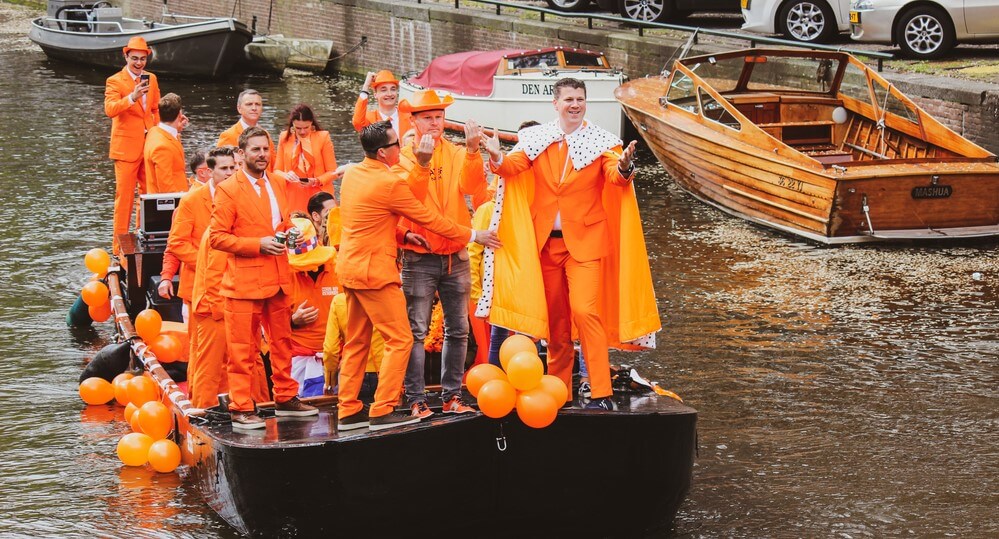
You’ll undoubtedly be familiar with Dutch culture if you’ve lived in the Netherlands or even just been there sometimes. Dutch culture is known for its tulips, bicycles, windmills, and wooden clogs, among other things. The Netherlands is full of these things, from the dark alleys of Amsterdam to the picturesque canals of Giethoorn.
Nevertheless, one component of Dutch culture is so pervasive that the Netherlands Board of Tourism uses it for marketing the nation abroad. No, it’s not bitterballen—though they are sufficiently good to draw tourists from all over the world—orange.
But why is orange associated with the Netherlands and Dutch culture so strongly?
The Netherlands’ rulers
The color orange is prevalent across the Netherlands. At live sporting events, Dutch sports supporters wear orange; the Dutch national football team is often jokingly referred to as Oranje. On King’s Day, Dutch people dress entirely in an orange, parade through the streets, and fly the national flag with a Holland orange pendant. Even the Dutch have a term for it: oranjekoorts (“orange fever”).
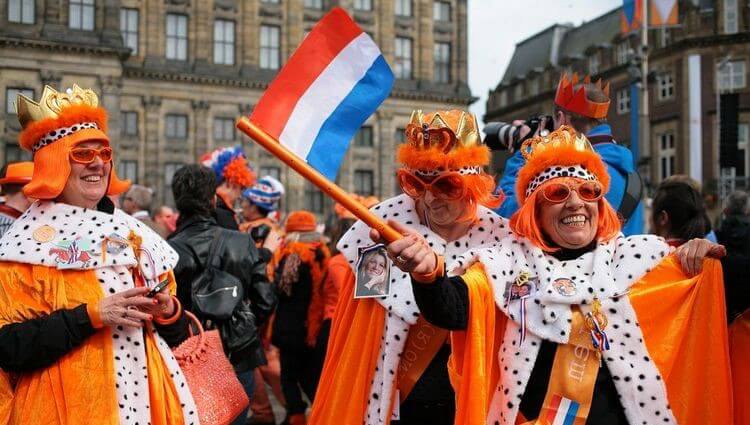
It’s probably best to start with the Dutch royal family, which (quite tellingly) comes from the House of Orange-Nassau, to understand why the Dutch wear orange. The current head of the House of Orange-Nassau, which has ruled the Netherlands since 1815, is King Willem-Alexander of the Netherlands. Orange I served as the first monarch of the Netherlands.
William of Orange
William, I did not start the House of Orange-Nassau, though. Despite being the forerunner of the current Kingdom of the Netherlands, the United Kingdom of the Netherlands was not the first “Dutch” state. The First French Empire, which had acquired the region of the Netherlands under Napoleon, fell into disarray, giving rise to the United Kingdom of the Netherlands (then known as the Kingdom of Holland).

The Dutch Republic, established in the middle of the Eighty Years’ War, was the first completely autonomous Dutch nation-state (also known as the Dutch Revolt). Rebels and the Spanish government, which had been in charge of the “Netherlands” (at the time, a group of provinces and fiefs governed collectively) since 1482, engaged in combat during the Dutch Revolt. William the Silent, often known as William of Orange, served as the principal rebel commander.
William of Orange established the House of Orange-Nassau. He is a German House of Nassau member, received the Principality of Orange as an inheritance from his cousin René of Chalon. William, who was just 11 years old when René passed away in 1544, received all of René’s properties and titles. Despite being raised a Lutheran and Catholic, he joined the revolt against the Spanish because they persecuted protestants and his strong conviction in religious freedom. This is one of the reason why do the Dutch wear orange.
The patriarch of the nation
William of Orange is referred to as the Father of the Fatherland in the Netherlands because of his involvement in the uprising against the Spanish and his support for the Union of Utrecht in 1579, which brought together the northern provinces of the Netherlands and is thought to have laid the groundwork for the Dutch Republic.
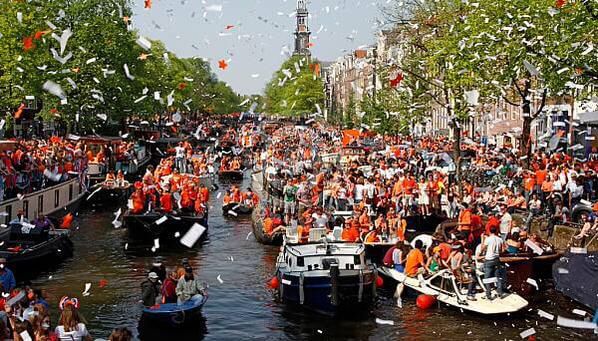
William was significant, but he was never a king. This was because the Netherlands at the time was a federal republic made up of seven provinces: the Duchy of Gelders, the County of Holland, the Zeeland, the Lordship of Utrecht, the Lordship of Overijssel, the Lordship of Frisia, and the Lordship of Groningen. As Stadtholder of Holland, Zeeland, Utrecht, and Friesland, William did, however, hold a significant amount of power and authority.
Years before the revolt, King Philip II of Spain had named him Stadtholder of Holland, Zeeland, and Utrecht. Before then, stadtholders served as the monarch or lord’s agents. Despite having no lands of their own, they could rule completely. However, under Philip II, their authority was diminished.
The Orange Principality
What precisely is the Principality of Orange, then? It was formerly a county within the Kingdom of Burgundy. Frederick I of the Holy Roman Empire gave the county independent rights inside the Empire in 1163. In essence, under the control of the Holy Roman Emperor, emancipated from the control of local lords. Once, it was no longer a part of the Holy Roman Empire, the Prince of Orange – the emperor’s sovereign authority.
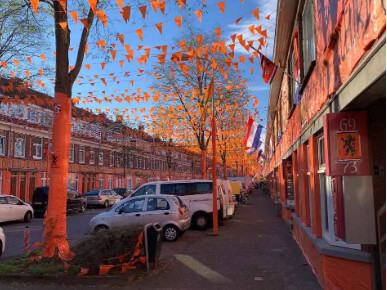
Contrary to popular belief, there is no immediate relationship between the name of the town of Orange and the fruit.
The southern French city of Orange and its surroundings made up the Principality of Orange. In contemporary France, the city is now a commune in the Provence-Alpes-Côte d’Azur region’s Vaucluse department.
Why then do the Dutch wear orange?
The people residing in the seven states of the Dutch Republic embraced the color orange due to the significance of William of Orange and the House of Orange-Nassau. The color was prominent on his heraldry and coat of arms in addition to his name.
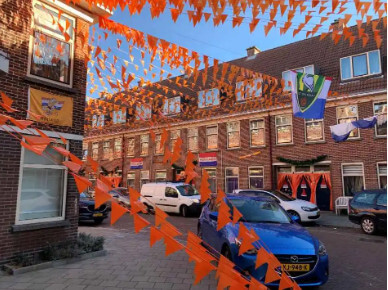
William holds a unique place in the hearts of the Dutch and the color in his honor. Because of his significance in Dutch history as the “Father of the Fatherland,” the person who freed the Dutch provinces from the Spanish, and stadtholders. The earliest version of the Dutch flag and troops fighting for freedom donned orange in combat. This is one of the reason why do the Dutch wear orange.
After William’s passing, his son Maurice cemented Dutch rule in the Lowlands, therefore, the color and name “orange” stayed throughout the Netherlands. The Family of Orange continued to produce stadtholders until it eventually overthrew the Dutch governing house. As the years passed, more Dutch institutions and establishments began to use orange, leading to its current prominence.
Another explanation
The fruit itself could have influenced the orange color’s association with the House of Orange. Despite having the same name, the Principality of Orange is unrelated to the fruit explanation. When sweet oranges first arrived in Europe at the beginning of the 16th century, it may have furthered the association between the term and the color. The name for the color is from the fruit, which arrived in Europe in the early ninth century.
The Principality acquired its association with the color due to its location along the route to ship Holland oranges to northern France. The Principality and its ruling house became associated with fruit and color.
Why The Netherlands is The Most Gingerful Country in The World?
What Makes Delft Such A Charming Dutch City?
King’s Day in 2022 in the Netherlands: everything you need to know!
